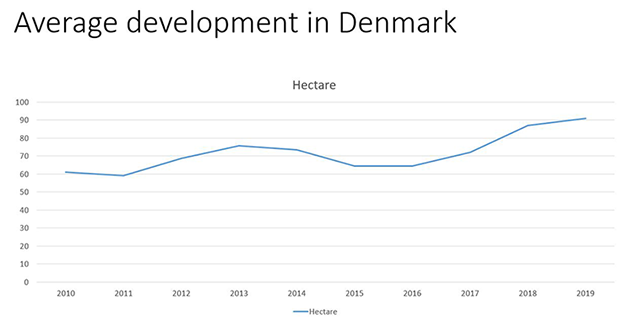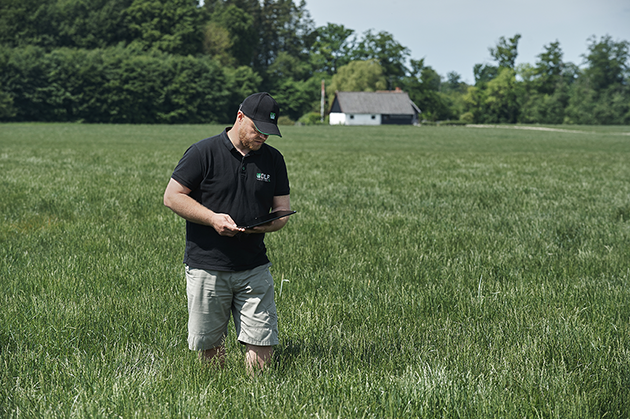The spring 2019 seed market: as usual, it's not business as usual!
A short and mild winter produced an early spring sales season. Seed stocks, already reduced by busy fall sales, moved fast – so fast that there was almost no pause for anyone in production, logistics or sales to catch their breath.
28/05/2019
Below-average harvests for grasses and clovers for a third year in Denmark
Drought was the biggest factor behind a poor yield from the 2018 Danish harvest. It was the third year in a row for below-average yields. Yields were also low in other seed-producing regions of northern Europe.
Although the drought also affected new seedings for the 2019 harvest, farmers managed to get extra seed into the ground and squeeze an extra year's production from existing fields. A mild winter was followed by an early spring in 2019, which up to this date has been dryer than usual.

Seed stocks melted away like ice in the sunshine
The good fall and spring sales seasons for 2018/19 drastically reduced grass and clover availability. A mix of factors – poor harvest, low third-country imports, and increased consumption throughout the EU and beyond – combined to hold prices firm for almost all species.
TURF: DLF Select shows great results in its first year
In a booming market for turf mixtures, seed buyers from the professional turf sector have  come to value the DLF Select programme. As demand for high-purity seed and top-quality technical varieties rises, so does our ability to supply it. DLF Select is what the market has been waiting for.
come to value the DLF Select programme. As demand for high-purity seed and top-quality technical varieties rises, so does our ability to supply it. DLF Select is what the market has been waiting for.

Within the big international DIY and supermarket chains, consumption of mixtures, including our SeedBooster and Quick Action concepts, is breaking new records. Many species and varieties are sold out, or close to being sold out.
Quick Action concepts, is breaking new records. Many species and varieties are sold out, or close to being sold out.
Perennial ryegrasses, especially 4turf® types, are in high demand and more or less gone.
Tall fescues are in tight supply, even from the US. Prices are very firm.
The market for smooth-stalked meadow grass is particularly difficult. Crop 2018 has gone, and the next harvest will be ready late to be used for the coming summer campaign.
Red fescues are generally in short supply, especially the slender and chewing types.
FORAGE: raised consumption reduces stocks, but DLF Fiber Energy helps to compensate
Forage seed is now in short supply. An extraordinary surge in consumption of forage mixtures during the summer of 2018 had already exhausted stocks. After a short, mild winter, buyers began their new season early in February.
It was the start of a long period of consumption that lasted until mid-April. This unexpected early burst of demand challenged the whole supply chain to react at speed – to get the seed certified, mixed, and shipped to farmers exactly when they needed it.
As a result of three months of steady spring demand, prices for almost all forage species increased again – and remained high.
It's at times like this that DLF Fiber Energy makes a difference. When seed is in short supply, improved digestibility helps the best dairy farmers get more feed value from their forage fibres, which helps boost milk production.
Also, as climate change intensifies and the potential for drought increases, science-based seed developments such as festuloliums, Tall Fescue PLUS, and Ryegrass PLUS become more and more relevant.
OUTLOOK: Stay in touch – stay close to DLF
Since stocks from the 2018 crop are mostly gone, the focus now is on the 2019 harvest. Keep careful track of your own stocks and take time to regularly reassess your expected future demand. Keep on top of your plans, and stay in close touch with your most adaptable science-based seed supplier, DLF.

To talk about any aspect of seeds, speak to your local DLF area manager. In a tough market, we're on your side.


